Former Metropolitan MGP site footprint (credit: National Grid)
Historic photos of the former Metropolitan MGP site
About two weeks ago, a fairly large section of Gowanus Canal bulkhead along the Lowe's parking lot near 9th Street collapsed, leaving a rather dangerous situation.A reader had contacted us on May 31st while we were out of town, so we could not immediately check it out until this past Friday.
Indeed, parts of the wooden bulkhead on the property at 128-132 Second Avenue gave way, taking quite a chunk out of the public access area along Lowe's property. The area has been fenced off, but it is unsettling that the collapse of a fairly new section of bulkhead along the canal could have given way.
The failure of the bulkhead is particularly dangerous not only because this section included a public access area, but also because the Gowanus Canal is an Environmental Protection Agency Superfund Site. In addition, the section is very close to the former Metropolitan Manufacturing Gas Plant site. From 1871 until the 1930s, combustible gas from coal and petroleum was made to supply local businesses and homes for lighting, heating and cooking. Brooklyn Union Gas operated the site from 1904 until it was decommissioned in the 30s. The Metropolitan MGP site is contaminated primarily with coal tar, which was produced as a byproduct of the gas manufacturing process. These contaminants have impacted the soil and groundwater in and around the former plant.
According to National Grid's web page on the Metropolitan MGP site:
By 1938, most of the operating structures had been removed, suggesting that gas manufacturing had ceased and the site was used for gas storage only. At this time, the Ernst Zobel Pitch Paint Manufacturing Plant was reportedly in operation adjacent to and northeast of the site. However, the adjacent Brooklyn Alcatraz Asphalt Company plant was no longer in operation by this time.
By 1950, the north-eastern portion of the former MGP housed a U.S. Post Office Garage and Repair shop, with some former MGP structures still existing closer to the Gowanus Canal on the western portion of the site. The southern portion of the former MGP still housed a gas holder and an exhaust house, with the parcel listed as a storage area.
By 1969, all former MGP structures had been removed from Block 1007, and a food products warehouse was present adjacent to the Gowanus Canal. By 1972, all structures from the former MGP had been removed from the surface of the site.
The eastern portion of the MGP and two adjacent parcels were investigated and remediated in 2003 by FC Gowanus, LLC, through extensive excavation of the former oil tanks and gas holders. In addition, approximately 44 recovery wells were installed to allow recovery of free phase non-aqueous phase liquid (NAPL). The remediation of these areas under NYSDEC oversight, with subsequent redevelopment as a Lowe’s Supply Store, provides the basis for the definition of the Current Site.
By 1950, the north-eastern portion of the former MGP housed a U.S. Post Office Garage and Repair shop, with some former MGP structures still existing closer to the Gowanus Canal on the western portion of the site. The southern portion of the former MGP still housed a gas holder and an exhaust house, with the parcel listed as a storage area.
By 1969, all former MGP structures had been removed from Block 1007, and a food products warehouse was present adjacent to the Gowanus Canal. By 1972, all structures from the former MGP had been removed from the surface of the site.
The eastern portion of the MGP and two adjacent parcels were investigated and remediated in 2003 by FC Gowanus, LLC, through extensive excavation of the former oil tanks and gas holders. In addition, approximately 44 recovery wells were installed to allow recovery of free phase non-aqueous phase liquid (NAPL). The remediation of these areas under NYSDEC oversight, with subsequent redevelopment as a Lowe’s Supply Store, provides the basis for the definition of the Current Site.
FC Gowanus, LLC is one of the Forest City Ratner Companies, which belongs to developer and real estate mogul Bruce Ratner. Ratner is better known in Brooklyn for the highly contentious Atlantic Yards development.
As part of the Superfund Clean-Up of the Gowanus Canal, the EPA has mandated further environmental remedial work on the MGP site, mainly in and around the former Pathmark building, just adjacent to where the bulkhead collapsed.
Most of the bulkheads along the Gowanus Canal will have to be repaired or replaced before dredging of the toxic material at the bottom of the waterway begins. Some property owners have already begun to do so. Obviously, it is important to make sure that they are secure enough.
Whether the bulkhead collapsed because of inferior design, bad engineering or because of the heavy rains we have experienced lately, it certainly should be investigated fully, so that mistakes can be fixed and designs improved in the future.

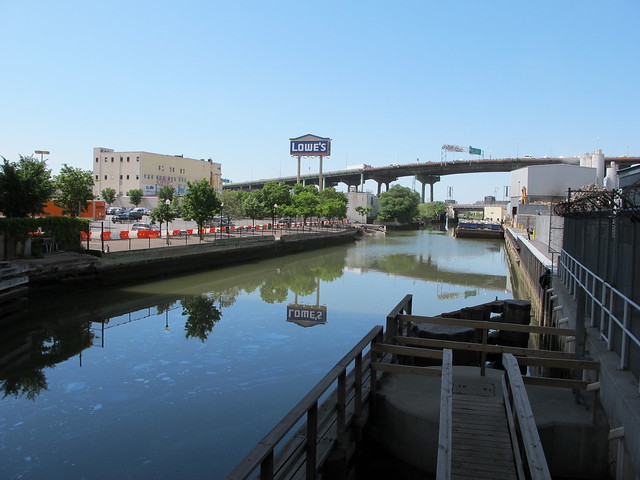
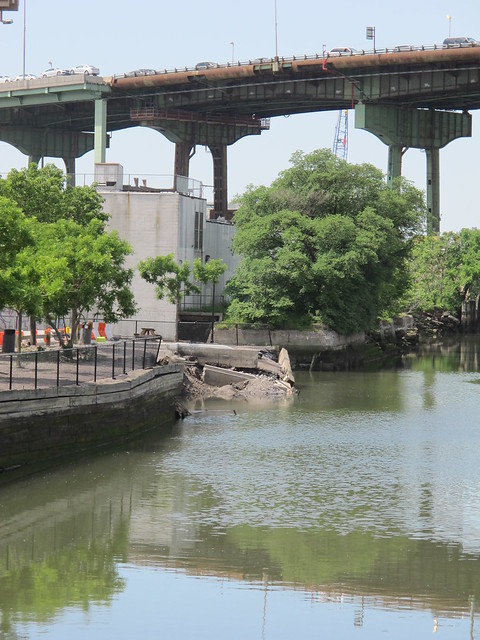
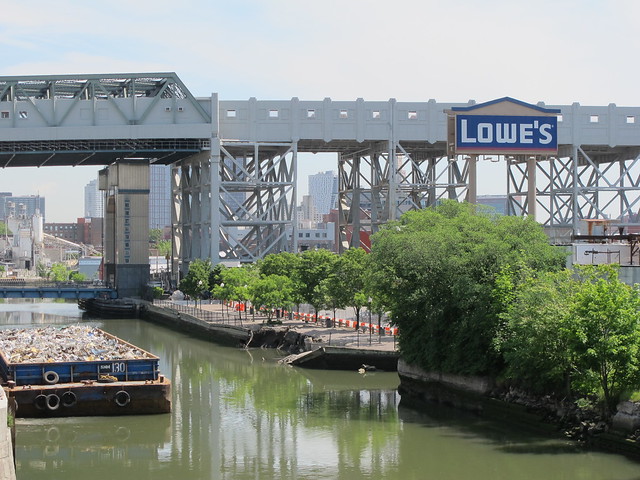
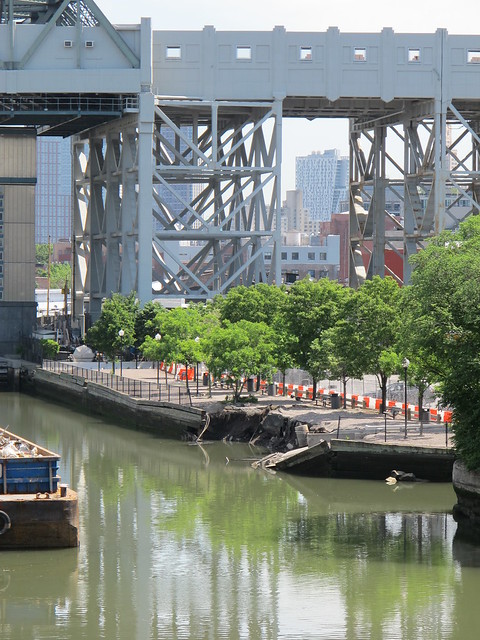
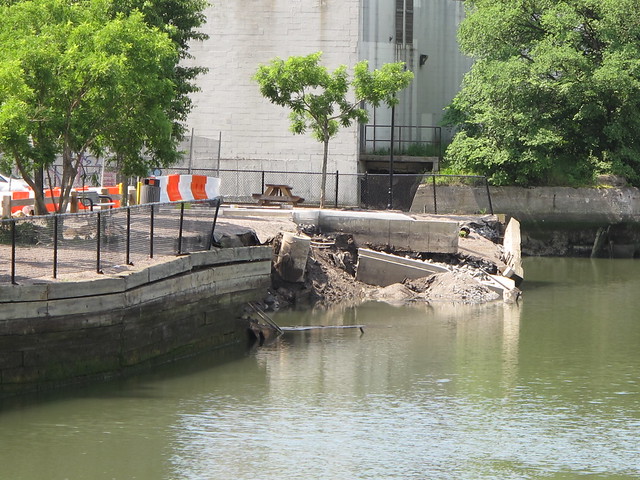
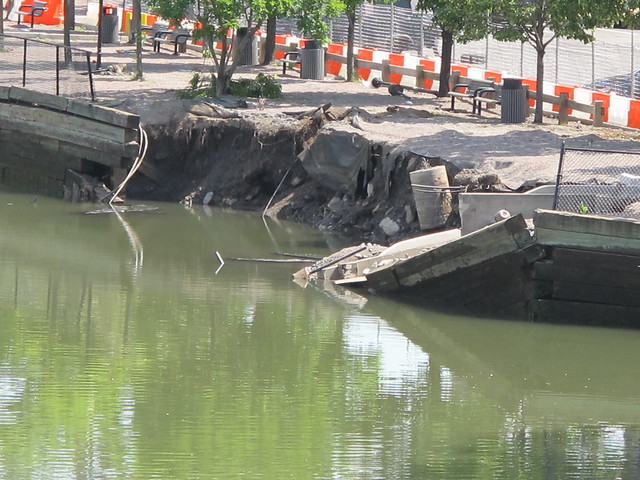
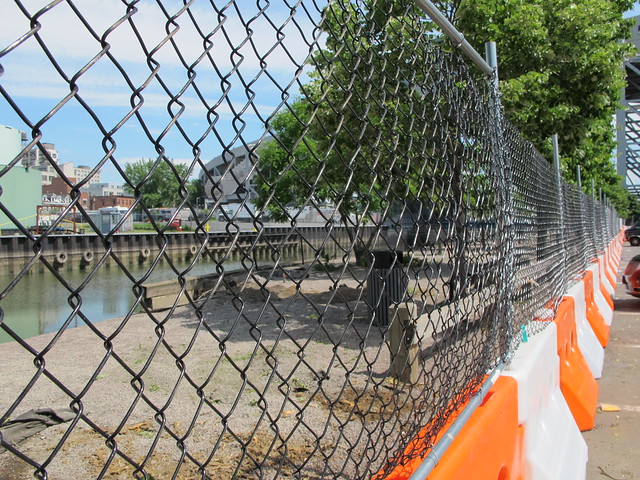
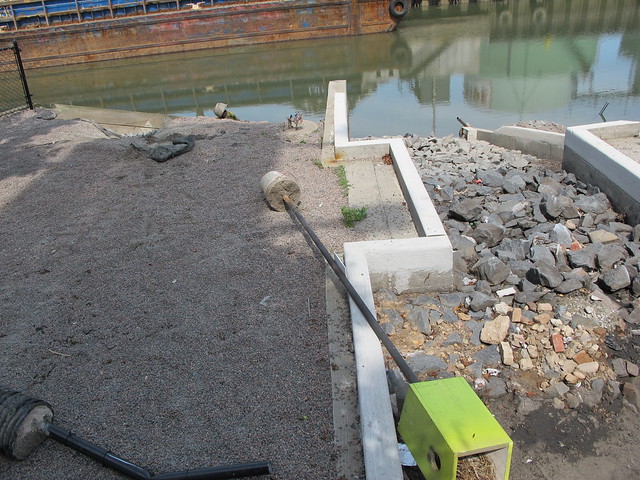










.JPG)

2 comments:
365 Bond Apts. comes to mind.
Most definitely.
Post a Comment